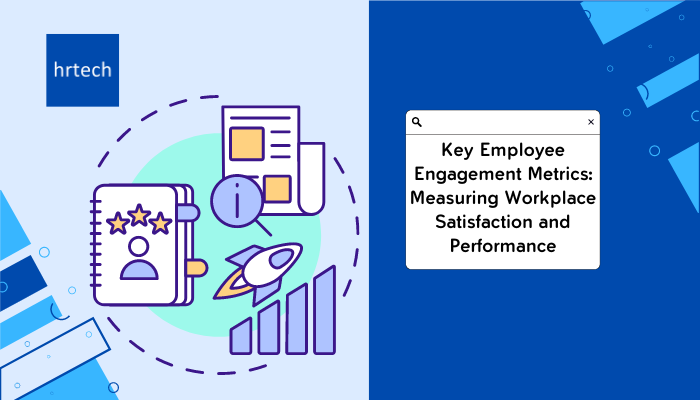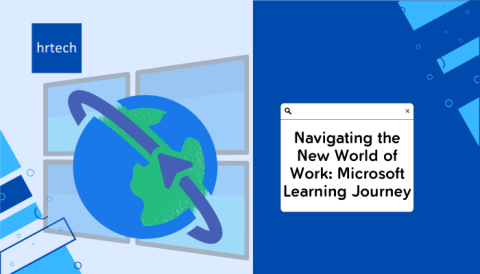Employee engagement has increasingly gained importance as organizations set into the new & a complex normal of the remote or hybrid workplace where flexibility is paramount.
by Bhumi Shah, Digital HR- Research and Consulting, hrtech
What are Employee Engagement Metrics?
“What gets measured, gets improved.” – Peter Drucker.
As the name suggests, employee engagement metrics measure how engaged employees are at their workplace. If your aim is to boost employee engagement, it only makes sense to measure how your employees feel about their work and the environment. These metrics try to gauge the soft part of an employee journey as to how motivated and connected they are towards the organization.
Employee engagement has increasingly gained importance as organizations set into the new & a complex normal of the remote or hybrid workplace where flexibility is paramount. Engagement enhances multiple facets and influences individual and organizational productivity. Further, it impacts employee wellbeing, communication and collaboration, rewards and performance, and other productivity-influencing factors.
Below are 5 essential metrics that organizations should track to enable an engaged and productive workforce.
- Cost of getting to optimum productivity level (OPL):
Significance:
Engagement of new hires becomes crucial, more so during the first year of employment. New hires when geared up with appropriate training and tools are poised to stay engaged and become productive soon. On the other hand, disengaged new hires indicate onboarding failure as they often turn out to become early exits.
Cost of getting to optimum productivity level(OPL) is the cost incurred in making the new hire reach the level of optimum productivity as defined by the organization. Low cost of getting to OPL indicates lesser cost in getting a new hire to speed up.
How to Calculate:
Sum of costs of recruitment, training processes, salary of the employee and the trainers, and all the other expenses incurred to make the new hire productive. - Feedback Frequency
Significance:
The importance of a continuous feedback loop can never be overstated. The feedback medium builds the platform for employee listening. While managerial feedback is useful for better understanding and alignments, employees could voice their thoughts and concerns with a 360-degree feedback mechanism. The loop eventually builds trust and confidence, ignites growth and sets clear work expectations for both the manager and the employee. Less-than-optimal feedback would often lead to employee disengagement while frequent feedback , say per week, overloads employees and reduces productivity. Typically, a monthly one-on-one feedback session with the employee seems ideal. The idea is to identify the optimal feedback frequency to establish a forum to openly share constructive thoughts, leading to a more collaborative, engaged and dynamic workforce.
How to Calculate:
While it can be tricky to figure out the right quantum and frequency of feedback, this could significantly vary based on the industry, nature of role, seniority level, and cultural context of the region among others. The frequency range can be arrived at by the HR teams after reviewing past data and from gathering feedback from the employees, managers and the teams. - Wellness Program Participation Rate
Significance:
Employee wellness and employee engagement and two sides of the same coin. Needless to say, a healthier employee will be more productive and engaged. On the other hand, for disengaged employees to show up to work with an unsupportive team, will take a toll on their mental wellness and productivity.
While organizations undertake multiple wellbeing initiatives to induce a happier and a healthier workforce, measuring their success is crucial to understand the overall workforce wellness. Tracking the wellness program participation rate over a certain period of time across segments (such as location, business units, gender, age and seniority level among others) will provide a summary of program access and adoption. This insight will help organizations take necessary steps to increase the reach and effectiveness of the wellness programs.
How to Calculate:
Wellness Program Participation Rate = (No. of employee participants / Total no. of eligible employees)*100 - Employee Net Promoter Score (NPS)
Significance:
Mirrored from the Customer NPS metric for gauging customer loyalty and retention, Employee NPS measures employee engagement and satisfaction while working for the organization.
Employees are surveyed on the following experience question: “On a scale of 0 to 10, how likely are you to recommend this organization as a place to work?” Answers received are usually categorized into three groups:
– Candidates ranking between 0 and 6: Detractors
– Candidates ranking 7 & 8: Neutrals / Passives
– Candidates ranking 9 & 10: Promoters
A higher candidate NPS score means a better outlook of employee experience. The score gives insights about where the organization currently stands in regards to engaging the current workforce and what further steps should be taken to improve the overall engagement level.
How to Calculate:
Employee NPS = % of Promoters – % of Detractors - Revenue per Employee
Significance:
Engaged workforce and organizational performance are positively correlated. An engaged employee is bound to give productive outputs, and in turn increase customer satisfaction and overall organizational revenues, while an disengaged employee will have a negative impact on the business growth. Revenue per Employee gives an approximate estimate of an employee’s contribution to the organization’s top line in monetary terms.Tracking Revenue per Employee metric across segments (such as location, business units, gender, age and seniority level among others) will provide the summary of productivity levels across the organization.
How to Calculate:
Revenue per Employee: Total Revenues/ Full-Time Equivalent
In Conclusion
Employee engagement is a perennial process whose true value is derived when the engagement aspects are measured over uniform yet frequent time intervals. Today, as we navigate through the ongoing talent scarcity in the labor market, engaging and retaining the existing workforce becomes more critical for business growth.The aforementioned metrics will aid organizations to detect the engagement levels early on and take corrective actions to scale up employee engagement levels across the organization.

About the author :
Bhumi Shah is a part of Digital HR- Research and Consulting team at hrtech.sg. With a PGDM in Human Resources and having worked as a content writer in the past, she aims to understand and highlight the key happenings in the HRTech market space and find out the in between trends hidden amidst the funding and consolidation deals.





